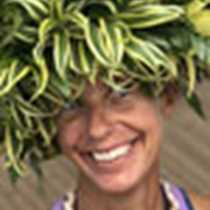Hinlopen Strait
This morning the National Geographic Explorer awoke in beautiful morning light off Cape Fanshawe in the company of thousands of seabirds. Brunnichs guillemots dominated the cliffs of dolerite-intruded limestone and filled the sky and water as they flew to and fro their feeding grounds and breeding colony. What an amazing scene to see such a profusion of life, living on the ledge for this brief season of egg laying/incubate and fledge!
Heading further down the strait we dropped anchor off the second largest and predominately ice-covered island of Nordaustland and headed to shore for long, medium and short walks. It was one of those quintessential Arctic days with clear conditions and we could see the rarely visible high peak of the archipelago, Mount Newtontoppen (1,713 meters/5,620 feet) in the distance.
Walking amongst raised beaches we found old bowhead whale bones and learned of isostatic rebound and the nature of the crust of the earth after being relieved of the weight of the glaciers that once covered the area of Torellneset. Svalbard poppies were in bloom and we found bright purple saxifrage, which enlivened an otherwise fairly barren landscape. As all walks led to a walrus haul-out we were truly treated to an exceptional experience of seeing walrus at eye level on land and in the water as they swam curiously right off the beach.
After lunch we were lured to the bow by the fog-veiled ice cap called Austfonna and the waterfalls cascading off its face. The closer we approached, the more beautiful its expanse became and it was hard to imagine the full extent of this glacial wall, 100 miles long! From there we headed south into the pack ice in search of Ursus maritimus.
While polar bears are something we hope for throughout this journey we could never have expected the amazing encounter of a polar bear approaching the ship and resting off our bow. A contemplative approach (what we think was a young female), the bear consciously made its way in our direction. The sense of smell is clearly the strongest sense in bears, as the bear waved its nose wildly, trying to identify our mixed scent as it rested on the pack ice not far from the ship. Intently in awe, we observed this quintessential creature of the Arctic and felt so blessed by this close encounter!
The day, the night and the light continued to give the gifts we will long remember as after dinner we observed more bears (two sows with cubs and a few in the distance) on the shore fast ice of Hochstetter Glacier.




